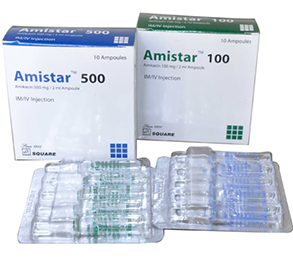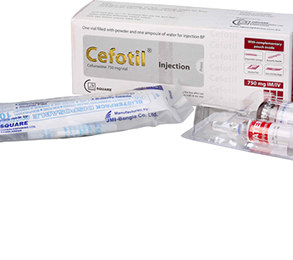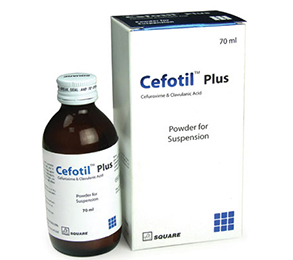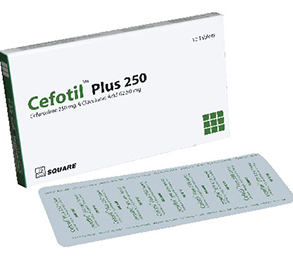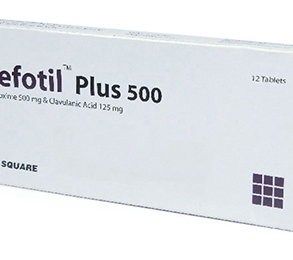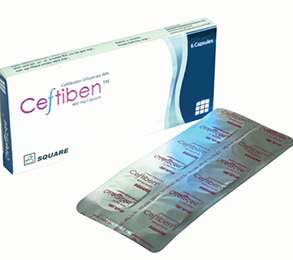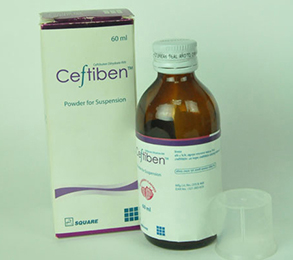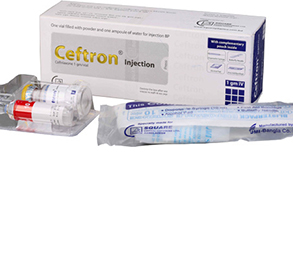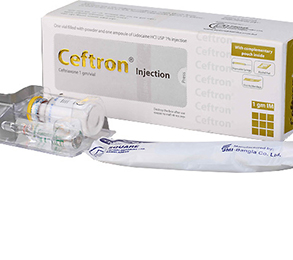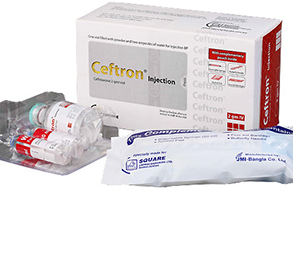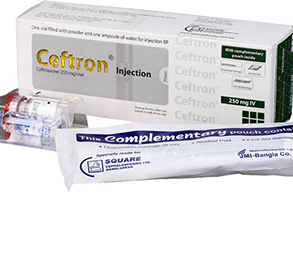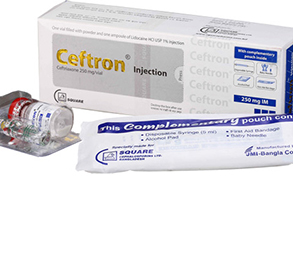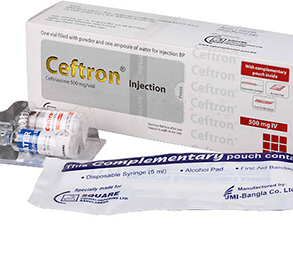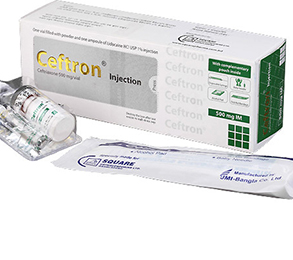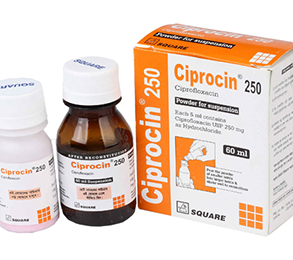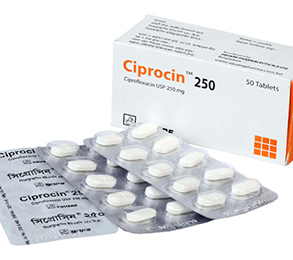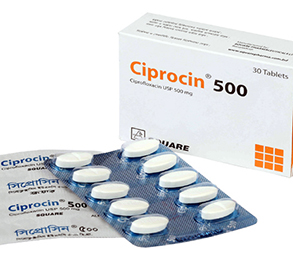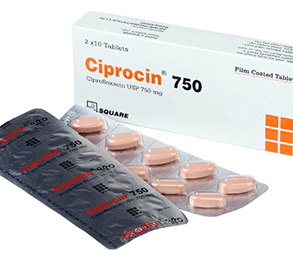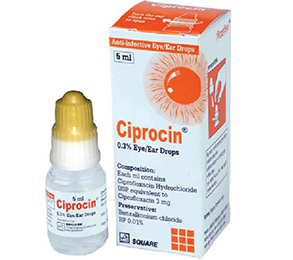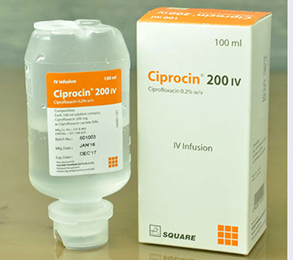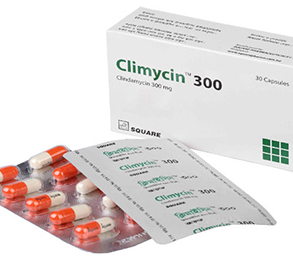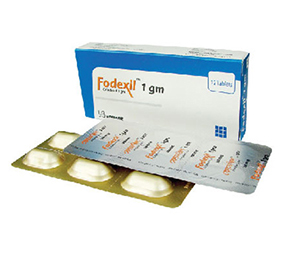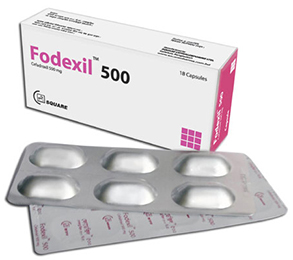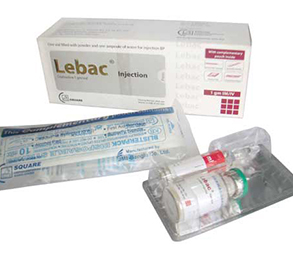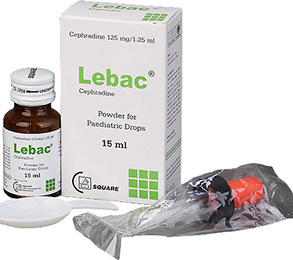Gemif Tablet 320 mg 1 Pc
Alternative products
Gemifloxacin
Indications
Gemifloxacin is indicated for the treatment of the following bacterial infections in adults caused by sensitive organisms as follows-
- Acute bacterial exacerbation of chronic bronchitis: caused by Streptococcus pneumoniae, Haemophilus influenzae, Haemophilus parainfluenzae, or Moraxella catarrhalis.
- Community-acquired pneumonia (of mild to moderate severity): caused by Streptococcus pneumoniae (including multi-drug resistant strains), Haemophilus influenzae, Moraxella catarrhalis, Mycoplasma pneumoniae, Chlamydia pneumoniae, or Klebsiella pneumoniae.
Pharmacology
Gemifloxacin is a fluoroquinolone antibiotic. It is bactericidal with minimum bactericidal concentrations. Gemifloxacin acts by inhibiting DNA synthesis through inhibition of the bacterial type II topoisomerases, DNA gyrase, and/or topoisomerase IV (TOPO IV) which are both essential for bacterial growth.
Gemifloxacin is rapidly absorbed after oral administration. It is widely distributed throughout the body. Studies in healthy subjects showed that gemifloxacin is distributed rapidly into target tissues and body fluids such as the lung (epithelial lining fluid, alveolar macrophages, bronchial tissue) and nasal secretions.
Following oral administration of gemifloxacin, approximately 36% and 61% of the dose is excreted in the urine and feces, respectively, as unchanged drug and metabolites. AUC values were generally only slightly higher (approx. 10%) in women than in men. No dose adjustment is required based on gender
Dosage & Administration
Acute bacterial exacerbation of chronic bronchitis: 320 mg once daily for 5 days.
Community-acquired pneumonia (Mild to moderate severity):
- Due to known or suspected S. pneumoniae, H. influenzae, M. pneumoniae, or C. pneumoniae infection: One 320 mg tablet daily for 5 days.
- Due to known or suspected multi-drug resistant Streptococcus pneumoniae, K.pneumoniae, or M. catarrhalis infection: One 320 mg tablet daily for 7 days.
* চিকিৎসকের পরামর্শ মোতাবেক ঔষধ সেবন করুন'
Interaction
Gemifloxacin absorption is significantly reduced when aluminium or magnesium containing antacids and iron salts are concomitantly administered. Gemifloxacin should be taken at least 2 hours before or 3 hours after these agents. Gemifloxacin should be taken at least 2 hours before sucralfate administration. No clinically significant interactions have been observed when Gemifloxacin was co-administered with omeprazole theophylline, digoxin, warfarin and oral contraceptives.
Contraindications
Known hypersensitivity to Gemifloxacin and other quinolones, Patients who have previously suffered tendon damage with fluoroquinolones. Gemifloxacin should not be used in children under 18 years of age.
Side Effects
The general adverse events include abdominal pain, diarrhea, headache, nausea, rash and vomiting. Some side effects have been infrequently reported such as fungal overgrowth in body, dizziness and insomnia, urticaria, pruritis and a maculopapular erythmatous skin rash.
Pregnancy & Lactation
Gemifloxacin should not be used in pregnant or lactating women. The safety and efficacy of Gemifloxacin in pregnant or lactating women have not been established.
Precautions & Warnings
For patients with severe impairment of renal function, alteration of the dosage regimen to 160 mg once daily is necessary. Adequate hydration of patients receiving Gemifloxacin should be maintained to prevent the formation of a highly concentrated urine and crystalluria. Gemifloxacin may cause dizziness; if this occurs, patients should not operate an automobile or machinery or engage in activities requiring mental alertness or co-ordination.
Tendinitis and tendon ruptures may occur in any age group during treatment with quinolones, including Gemifloxacin, but particularly in elderly patients or when corticosteroids are being co-administered. Gemifloxacin should be discontinued if tendinitis is suspected or at the first sign of pain or inflammation and the affected limb should be rested. In clinical studies with Gemifloxacin a small mean increase in QTc interval was observed. Gemifloxacin should be used with caution in patients predisposed to QTc interval prolongation or in patients taking other medications that are known to prolong the QTc interval. Gemifloxacin should be used with caution in patients with epilepsy.
Use in Special Populations
Renal impairment: Dose adjustment in patients with mild/moderate renal impairment is not required. Some modification of dosage is recommended for patients with severe renal dysfunction. The following table provides dosage guidelines for use in patients with renal impairment:
- Creatinine Clearance (>40 ml/min): See usual dosage
- Creatinine Clearance (<40 ml/min): 160 mg once daily
- Patients on haemodialysis or continuous ambulatory peritoneal dialysis therapy should receive 160 mg once daily.
Hepatic impairment: Gemifloxacin may be given to patients with hepatic impairment, with no requirement for dose adjustment.
Elderly patients: Dose adjustment is not required.
Overdose Effects
No specific antidote is known. Dialysis does not remove Gemifloxacin sufficiently to be useful in overdose. In the event of acute oral overdosage, the stomach should be emptied by inducing vomiting or by gastric lavage; the patient should be carefully observed, treated symptomatically and adequate hydration should be maintained.
Therapeutic Class
4-Quinolone preparations
Storage Conditions
Keep below 30°C temperature, away from light & moisture. Keep out of the reach of children.
- Type Tablet
- Tag
- Morbi leo risus
- Porta ac consectetur ac
- Vestibulum at eros






